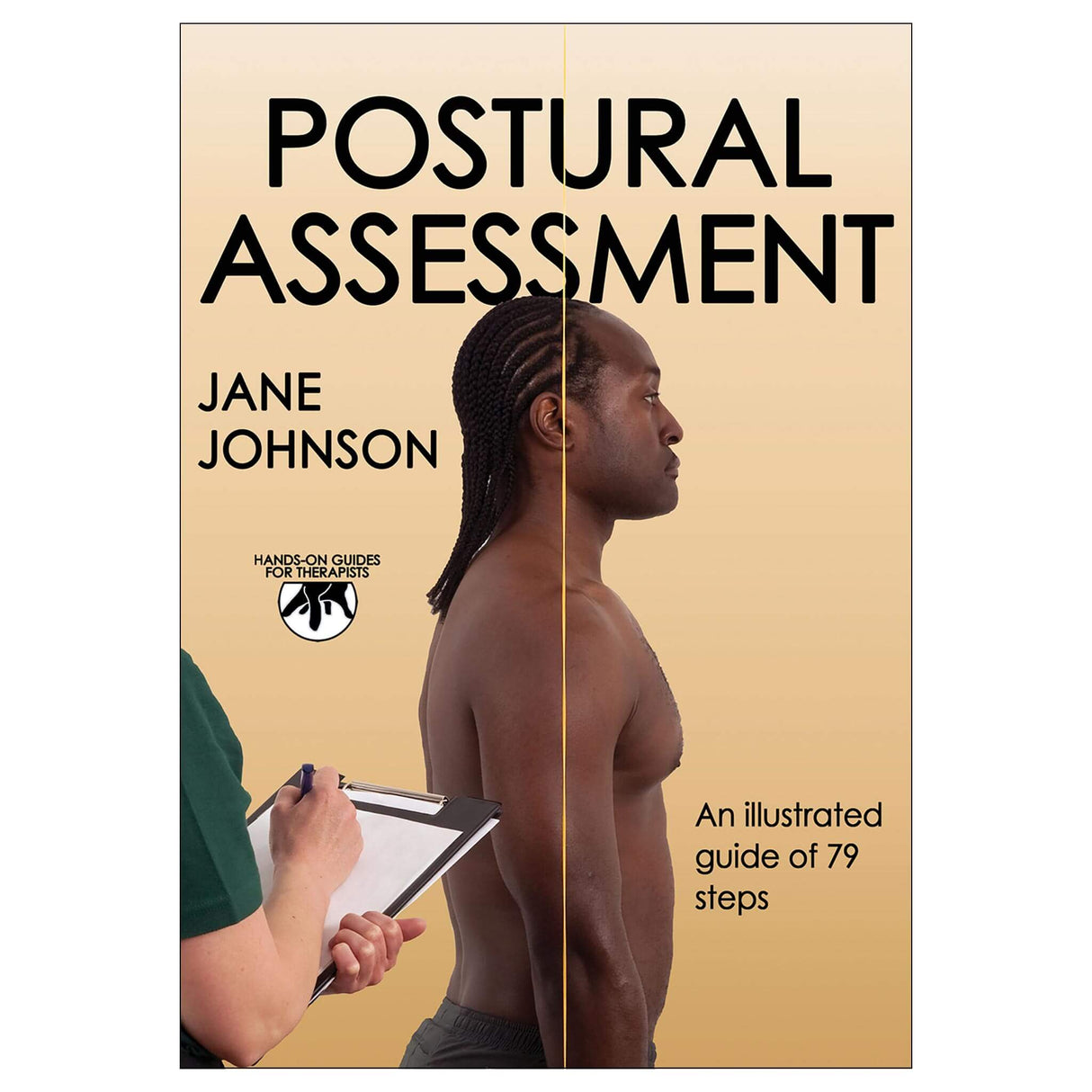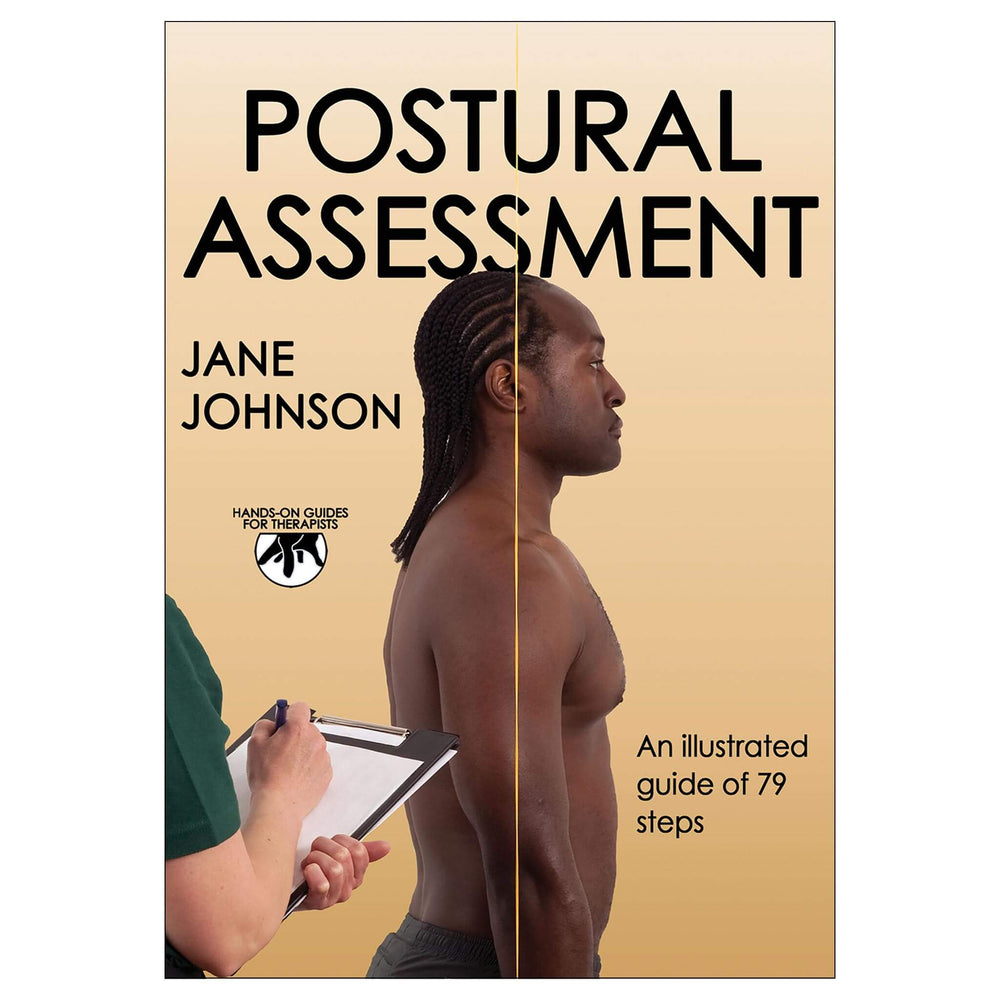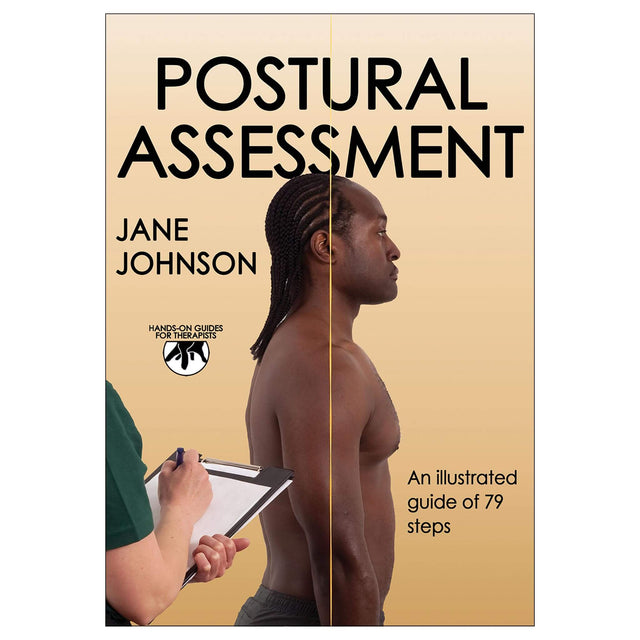Postural Assessment PDF
Author: Jane Johnson
$30.00 USD
Access Duration: 10 Years
Though postural assessment is a skill required by most therapists and useful for many health and fitness professionals, few resources offer a complete discussion of the topic to support practitioners in the task. Written for students and practitioners of massage therapy, physical therapy, osteopathy, chiropractic, sports medicine, athletic training, and fitness instruction, Postural Assessment is a guide to determining muscular or fascial imbalance and whether that imbalance contributes to a patient’s or client’s pain or dysfunction.
Jane Johnson, a practicing physiotherapist and sport massage therapist and instructor, breaks down the complex and holistic process of assessing posture into easy-to-assimilate sections. Johnson begins with a discussion of ideal posture and the factors affecting posture as well as how to provide the correct environment for postural assessment, necessary equipment, and the importance of documenting assessment findings. Then she details procedures for executing postural assessments from standing posterior, lateral, and anterior views as well as with the patient or client in a seated position. The text features tips for improving assessment technique, and What Your Findings Mean sections provide readers—students in particular—with guidance for systematic analysis. Each chapter ends with five Quick Questions, with answers, to assist in gauging understanding of the topics covered.
Information in the text is enhanced with detailed illustrations that offer visual cues to learning postural assessment and identifying anatomical relationships. Line drawings illustrate bony landmarks used in the assessments, and numerous photos show both obvious and subtle postural variations. Reproducible illustrated postural assessment charts in the appendix provide space for recording observations during each step of the assessment.
Postural Assessment can assist practitioners in learning what posture reveals about the relationships among various body parts and in determining whether such relationships cause or contribute to pain or discomfort. As a resource for novices, Postural Assessment offers guidance in observing and identifying common postural forms and interpreting those observations.
Postural Assessment is part of the Hands-On Guides for Therapists series, which features specific tools for assessment and treatment that fall well within the realm of massage therapists but may be useful for other body workers, such as osteopaths and fitness instructors. The guides include full-color instructional photographs, Tips sections that aid in adjusting massage techniques, Client Talk boxes that present ideas for creatively applying techniques for various types of clients, and questions for testing knowledge and skill.
Part I. Getting Started With Postural Assessment
Chapter 1. Introduction to Postural Assessment
What Is Posture?
What Factors Affect Posture?
Is There an Ideal Posture?
Why Should I Do a Postural Assessment?
Who Should Have a Postural Assessment?
Where Can Postural Assessment Take Place?
When Should Postural Assessment Be Done?
Closing Remarks
Quick Questions
Chapter 2. Preparing for Postural Assessment
Equipment Required
Time Required
Postural Assessment Steps
Standard Alignments
Documenting Your Findings
Cautions and Safety Issues
Closing Remarks
Quick Questions
Part II. Carrying Out Postural Assessment
Chapter 3. Posterior Postural Assessment
Upper Body
Lower Body
Quick Questions
Chapter 4. Lateral Postural Assessment
Upper Body
Lower Body
Comparing Overall Posture
Quick Questions
Chapter 5. Anterior Postural Assessment
Upper Body
Lower Body
An Overall View: Body Shape
Quick Questions
Chapter 6. Seated Postural Assessment
Posterior View
Lateral View
Quick Questions





